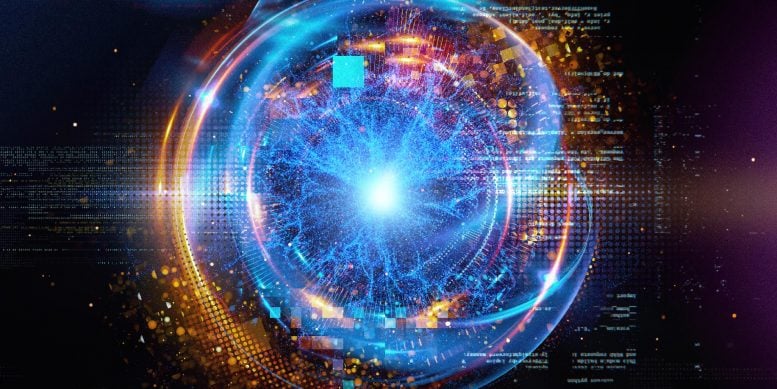
A new test confirms deep quantum behavior in large-scale systems, including multipartite correlations.
Is it possible to verify whether a large quantum system genuinely follows the unusual principles of quantum mechanics, or merely appears to do so? In a groundbreaking experiment, physicists from Leiden, Beijing, and Hangzhou have answered that question.
At the heart of their investigation is what could be described as a “quantum lie detector”: Bell’s test, developed by physicist John Bell. This test can determine whether a system, such as a quantum computer, is actually harnessing quantum effects rather than just imitating them.
As quantum technology continues to advance, the need for more rigorous methods to confirm true quantum behavior grows. In this latest research, the team pushed boundaries by examining Bell correlations in systems containing as many as 73 qubits, the fundamental units of a quantum computer.
The work was carried out by an international team of researchers. It included theoretical physicists Jordi Tura, Patrick Emonts, and PhD candidate Mengyao Hu from Leiden University, along with collaborators from Tsinghua University in Beijing and experimental physicists from Zhejiang University in Hangzhou.
Clever experimenting
Although the plan was highly ambitious, the team’s carefully refined approach proved crucial. Rather than attempting to directly measure the intricate Bell correlations, they concentrated on a task that quantum devices already handle well: minimizing energy.
This strategy proved successful. Using 73 qubits on a superconducting quantum processor, the researchers created a unique quantum state and recorded energy levels significantly lower than what any classical system could achieve. The results were remarkably distinct, showing a difference of 48 standard deviations, which makes the likelihood of a random outcome virtually nonexistent.

But the team didn’t stop there. They went on to certify a rare and more demanding type of nonlocality – known as genuine multipartite Bell correlations. In this kind of quantum correlation, all qubits in the system must be involved, making it much harder to generate — and even harder to verify. Remarkably, the researchers succeeded in preparing a whole series of low-energy states that passed this test up to 24 qubits, confirming these special correlations efficiently.
This result shows that quantum computers are not just getting bigger — they are also becoming better at displaying and proving truly quantum behavior.
Why this matters
This study proves that it’s possible to certify deep quantum behavior in large, complex systems — something never done at this scale before. It’s a big step toward making sure quantum computers are truly quantum.
These insights are more than just theoretical. Understanding and controlling Bell correlations could improve quantum communication, make cryptography more secure, and help develop new quantum algorithms.
Reference: “Probing Many-Body Bell Correlation Depth with Superconducting Qubits” by Ke Wang, Weikang Li, Shibo Xu, Mengyao Hu, Jiachen Chen, Yaozu Wu, Chuanyu Zhang, Feitong Jin, Xuhao Zhu, Yu Gao, Ziqi Tan, Zhengyi Cui, Aosai Zhang, Ning Wang, Yiren Zou, Tingting Li, Fanhao Shen, Jiarun Zhong, Zehang Bao, Zitian Zhu, Zixuan Song, Jinfeng Deng, Hang Dong, Xu Zhang, Pengfei Zhang, Wenjie Jiang, Zhide Lu, Zheng-Zhi Sun, Hekang Li, Qiujiang Guo, Zhen Wang, Patrick Emonts, Jordi Tura, Chao Song, H. Wang and Dong-Ling Deng, 22 April 2025, Physical Review X.
DOI: 10.1103/PhysRevX.15.021024
Never miss a breakthrough: Join the SciTechDaily newsletter.
1 Comment
These insights are more than just theoretical. Understanding and controlling Bell correlations could improve quantum communication, make cryptography more secure, and help develop new quantum algorithms.
VERY GOOD!
Please ask researchers to think deeply:
1. How are Bell correlations related to the so-called quantum?
2. What is the physical reality of quantum? Can it be compared to a cat?